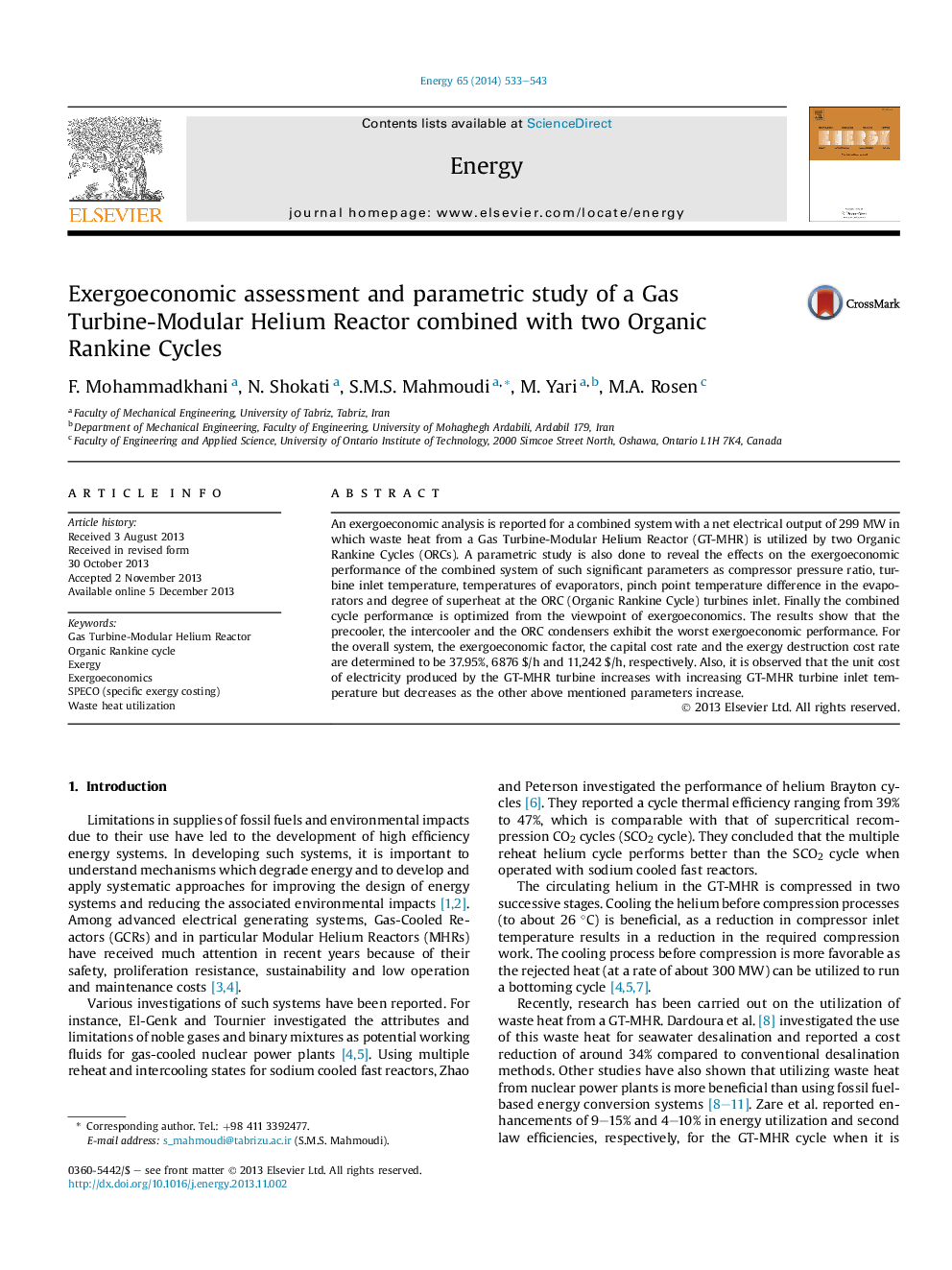| Article ID | Journal | Published Year | Pages | File Type |
|---|---|---|---|---|
| 1732709 | Energy | 2014 | 11 Pages |
•An exergoeconomic analysis is performed for the GT-MHR/ORC (Organic Rankine Cycle) combined cycle.•The effects of decision parameters on the exergoeconomic performance are studied.•The highest exergy destructions occur in the precooler, intercooler and condenser.•Superheating the working fluid at the ORC turbine inlet is not necessary.•Thermodynamic and exergoeconomic optimal conditions differ from each other.
An exergoeconomic analysis is reported for a combined system with a net electrical output of 299 MW in which waste heat from a Gas Turbine-Modular Helium Reactor (GT-MHR) is utilized by two Organic Rankine Cycles (ORCs). A parametric study is also done to reveal the effects on the exergoeconomic performance of the combined system of such significant parameters as compressor pressure ratio, turbine inlet temperature, temperatures of evaporators, pinch point temperature difference in the evaporators and degree of superheat at the ORC (Organic Rankine Cycle) turbines inlet. Finally the combined cycle performance is optimized from the viewpoint of exergoeconomics. The results show that the precooler, the intercooler and the ORC condensers exhibit the worst exergoeconomic performance. For the overall system, the exergoeconomic factor, the capital cost rate and the exergy destruction cost rate are determined to be 37.95%, 6876 $/h and 11,242 $/h, respectively. Also, it is observed that the unit cost of electricity produced by the GT-MHR turbine increases with increasing GT-MHR turbine inlet temperature but decreases as the other above mentioned parameters increase.
